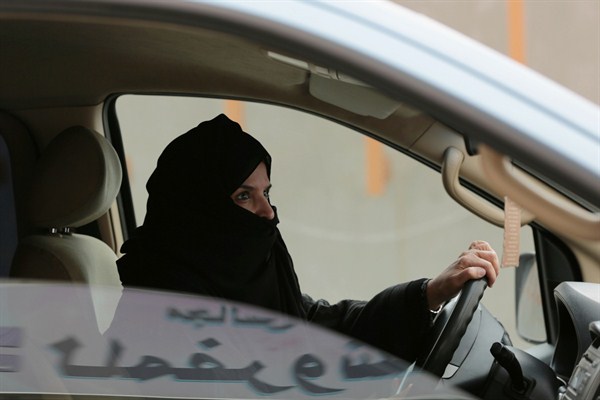The royal decree permitting Saudi women to apply for driver’s licenses in June 2018, issued late last month, was a highly visible statement of intent from Crown Prince Mohammed bin Salman that his plans to modernize and reform Saudi Arabia remain on track. Uncertainty over the viability of the crown prince’s much-vaunted plans to transform the Saudi economy had mounted after the partial reversal of austerity measures last April and reports in September that the National Transformation Program, a series of economic reforms with a target date of 2020, was being revised.
Slower than expected progress on restructuring Saudi Aramco, the state oil company and proverbial cash cow, ahead of its partial privatization reinforced skeptics’ concerns that it was proving harder to translate vision into reality in a kingdom unused to rapid shakeup on the scale conceived by the 32-year-old crown prince. And yet, the acceleration of a generation of young royal family members into leadership positions has injected fresh faces into decision-making structures and provided the springboard for the more substantive reforms that are yet to come.
Two reshuffles in April and June brought many of the third and fourth generation of Al Saud princes—the grandsons and great-grandsons of founder King Abdulaziz—into positions of responsibility, continuing the transition away from the sons of Abdulaziz, who have dominated Saudi public life since 1953. The elevation in June of Mohammed bin Salman to crown prince may have been a move that was anticipated by many Saudi watchers. But it was buttressed by an array of other appointments that cumulatively amounted to a reformulation of leadership that moved the kingdom decisively away from the gerontocracy it was in danger of turning into. In addition to the new crown prince, Saudi Arabia now has a 33-year old minister of interior, Prince Abdulaziz bin Saud, and a 28-year-old ambassador to the United States, Prince Khalid bin Salman, a younger brother of Mohammed bin Salman. Such a lineup would have been dismissed as inconceivable by most observers of Saudi Arabia even five years ago.

